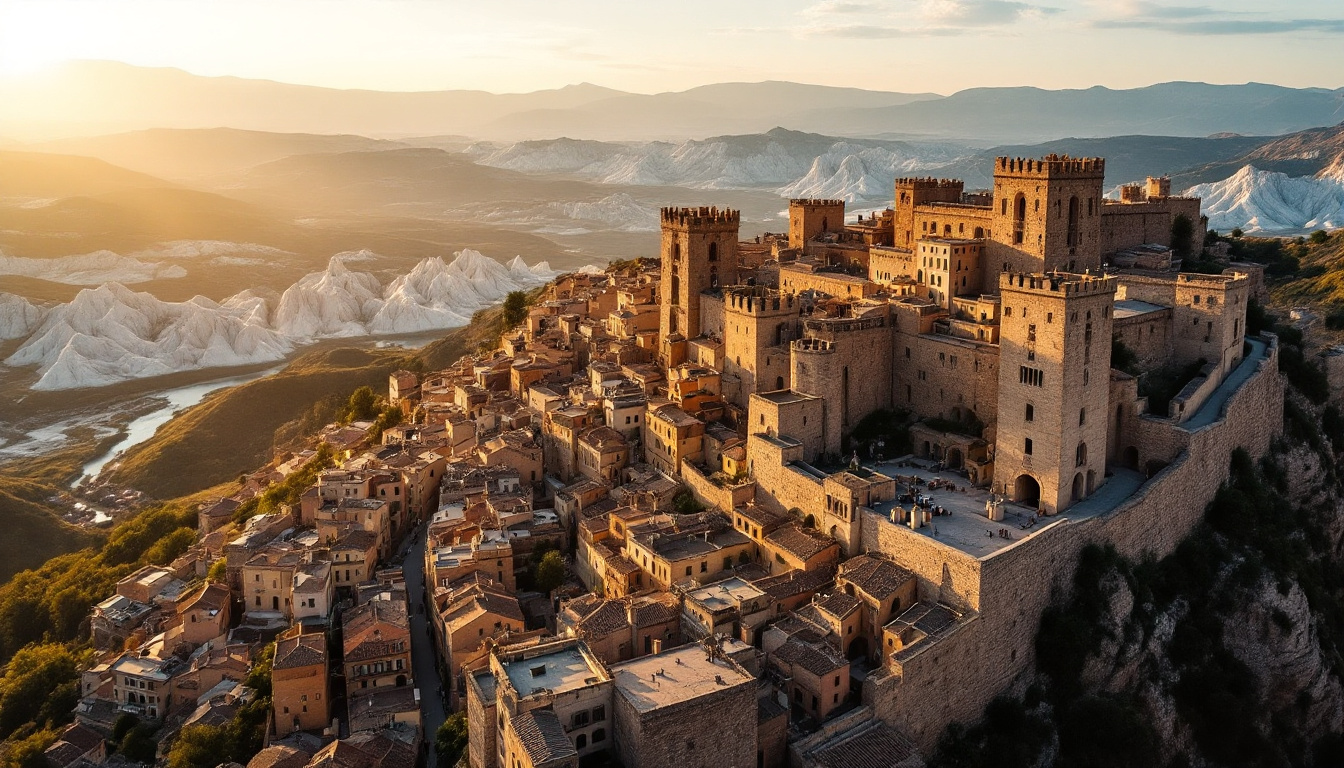The medieval fortress town that sits atop Spain’s hidden salt mountain is truly a marvel that time forgot. Just 90 kilometers from Barcelona’s bustling streets, Cardona offers travelers an extraordinary journey through Catalonia’s rich past, crowned by a spectacular 9th-century castle and one of Europe’s most remarkable geological wonders. This hidden gem combines medieval charm with natural splendor that few tourists ever discover.
A castle straight from Game of Thrones
Perched dramatically atop a hill overlooking the Cardener River valley, Cardona Castle has stood sentinel since the 9th century. The imposing stone fortress features the towering Minyona Tower and houses the breathtaking Collegiate Church of San Vicente, showcasing pristine examples of Lombard Romanesque architecture.
“The castle of Cardona isn’t just a building – it’s a living chronicle of Catalonian resistance and pride,” explains local historian Maria Puig. “It withstood sieges during the War of Succession and even Napoleon’s forces couldn’t break its spirit.”
Today, the castle operates as the Parador de Cardona, allowing visitors to sleep within medieval walls and experience sunrise views that have captivated nobles and knights for over a millennium.
The mountain that grows: Cardona’s salt miracle
Perhaps even more impressive than the castle is Cardona’s Salt Mountain Cultural Park. This rare diapir stretches nearly two kilometers underground and continues to grow despite erosion – a geological anomaly that has shaped the town’s fortunes for millennia.
Underground tours take visitors through colorful salt galleries with formations in stunning hues of white, gray, and amber. Salt mining operations here date back to Roman times and only ceased in the 1990s, leaving behind a labyrinth of shafts and chambers now open for exploration.
Medieval streets frozen in time
Wandering through Cardona’s old town feels like stepping through a portal to the Middle Ages. The Portal de Graells, the only surviving gate from the original 15th-century walls, welcomes visitors to a maze of narrow stone streets and hidden squares.
The 14th-century Església de Sant Miquel stands as testament to the town’s religious heritage, while the Plaça del Mercat dazzles with its unusual porticoed gallery featuring nine arches – each in a different architectural style.
A taste of authentic Catalonia
Cardona’s culinary scene offers flavors that have evolved over centuries. Traditional Catalan dishes like trinxat (cabbage and potato hash with pork) and coca de recapte (savory flatbread with roasted vegetables) are prepared with the same techniques used for generations.
“Our food tells the story of our land – simple ingredients transformed by time and tradition,” says Josep Ferrer, owner of a family restaurant in town. “When you eat here, you’re tasting history.”
Beyond Cardona: day trips worth taking
Cardona makes an ideal base for exploring other hidden gems of Catalonia. Medieval villages with secret passages are scattered throughout the region, each with stories waiting to be discovered.
For geology enthusiasts, comparing Cardona’s salt mountain to ancient cities carved into rose-colored rock faces offers fascinating contrast. Meanwhile, architecture buffs might appreciate Renaissance engineering marvels found throughout neighboring provinces.
Staying in a medieval fortress
The Parador hotel inside Cardona Castle offers a once-in-a-lifetime opportunity to sleep where kings and queens once plotted Catalonia’s future. With just 54 rooms, reservations should be made months in advance, especially for the coveted tower suites with panoramic views.
For travelers seeking more modern accommodations, boutique hotels in the old town blend contemporary comforts with historical character at more modest prices.
Whether you’re chasing the perfect sunrise photograph from ancient ramparts, exploring crystalline salt caves, or simply savoring the silence of cobblestone streets, Cardona delivers an authentic Spanish experience far removed from the overcrowded tourist destinations. In this medieval haven, history isn’t just preserved – it’s still being lived.
